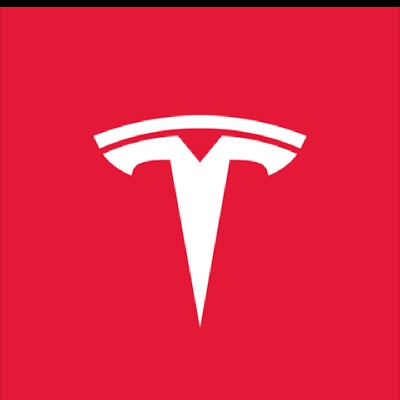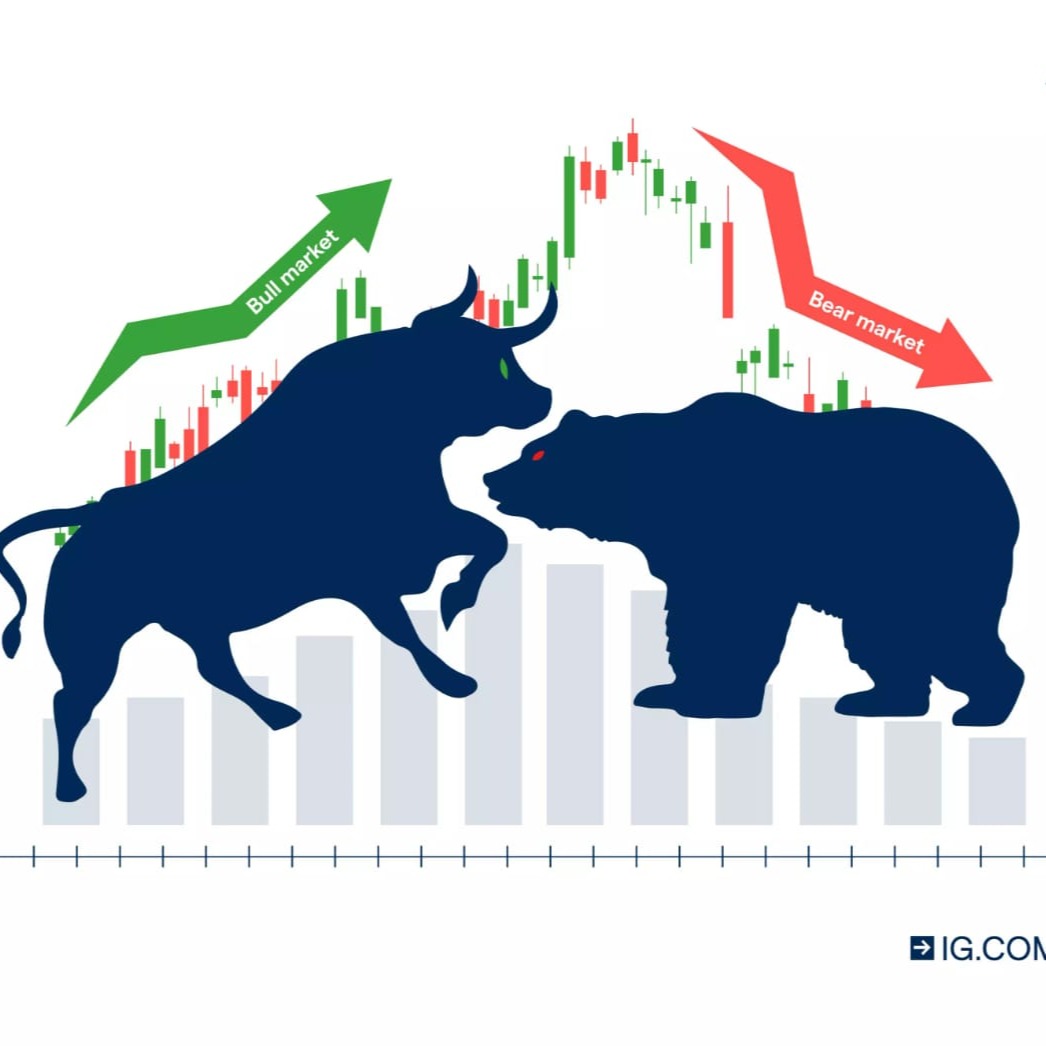
Harga GasGAS
USD
Dilisting
$1.86USD
+3.84%1D
Harga Gas (GAS) dalam United States Dollar adalah $1.86 USD.
Grafik harga Gas (USD/GAS)
Terakhir diperbarui pada 2025-12-25 13:05:58(UTC+0)
Kalkulator harga GAS/USD
GAS
USD
1 GAS = 1.86 USD. Harga saat ini untuk mengonversi 1 Gas (GAS) ke USD adalah 1.86. Nilai tukar ini hanya untuk referensi.
Bitget menawarkan biaya transaksi terendah di antara semua platform perdagangan utama. Semakin tinggi level VIP kamu, semakin menguntungkan tarifnya.
Harga live Gas hari ini dalam USD
Harga live Gas hari ini adalah $1.86 USD, dengan kapitalisasi pasar saat ini sebesar $120.93M. Harga Gas naik sebesar 3.84% dalam 24 jam terakhir, dan volume perdagangan 24 jam adalah $3.07M. Tingkat konversi GAS/USD (Gas ke USD) diperbarui secara real time.
Berapa nilai 1 Gas dalam United States Dollar?
Saat ini, harga Gas (GAS) dalam United States Dollar adalah $1.86 USD. Kamu dapat membeli 1 GAS dengan harga $1.86, atau 5.37 GAS dengan harga $10 sekarang. Dalam 24 jam terakhir, harga tertinggi GAS ke USD adalah $1.89 USD, dan harga terendah GAS ke USD adalah $1.79 USD.
Menurut kamu, apakah harga Gas akan naik atau turun hari ini?
Total voting:
Naik
0
Turun
0
Data voting diperbarui setiap 24 jam. Data ini mencerminkan prediksi komunitas mengenai tren harga Gas dan tidak boleh dianggap sebagai saran investasi.
Info Pasar Gas
Kinerja harga (24j)
24j
Terendah 24j $1.79Tertinggi 24j $1.89
Tertinggi sepanjang masa (ATH):
$97.49
Perubahan harga (24j):
+3.84%
Perubahan harga (7H):
+3.47%
Perubahan harga (1T):
-61.21%
Peringkat pasar:
#196
Kapitalisasi pasar:
$120,929,716.55
Kapitalisasi pasar yang sepenuhnya terdilusi:
$120,929,716.55
Volume (24j):
$3,073,329.9
Suplai beredar:
64.99M GAS
Suplai maks.:
--
Tentang Gas (GAS)
加密货币燃料(Gas)是与以太坊(Ethereum)区块链网络相关的一种关键概念。它代表了执行智能合约和交易所需的计算资源。与传统的货币不同,加密货币燃料作为一种数字资产,在加密货币交易和区块链操作中发挥了重要的角色。
加密货币燃料的主要功能是支付区块链上的操作费用。当用户在以太坊网络上执行智能合约、发送交易或存储数据时,需要支付一定数量的燃料。这些燃料费用有助于保持网络的安全性和可靠性,同时为矿工提供了激励,使他们愿意验证和处理用户的交易。
加密货币燃料的数量是按照计算资源消耗来确定的。每个操作都有一个燃料成本,而复杂的操作可能需要更多的燃料。这意味着,执行复杂智能合约或涉及大量数据存储的交易需要支付更高数量的燃料。
在加密货币燃料中,以太(Ether)是以太坊网络中使用的单位。用户需要使用以太来购买燃料,并支付给矿工来验证和处理他们的交易。矿工在接受燃料支付后,将根据燃料费用和燃料成本的比例来决定交易的处理优先级。
一个重要的事实是,燃料并不会被"烧毁"或消耗,而是被转移给矿工作为激励。这意味着,如果用户支付的燃料费用超过了实际操作所需的费用,剩余的燃料将退还给用户。
加密货币燃料对于保持以太坊网络的安全性和成长至关重要。它确保了网络的可靠性,并为参与其中的矿工提供了经济激励。同时,用户需要根据实际操作的复杂性和网络拥塞情况,合理支付燃料费用,以确保交易得到及时验证和处理。
总结起来,加密货币燃料是一种与以太坊区块链网络相关的数字资产。它被用于支付区块链操作费用,并为矿工提供激励。了解燃料的概念和功能可以帮助用户更好地理解加密货币交易的工作原理和成本结构,从而更加安全和高效地参与到加密货币生态系统中。
Tampilkan lebih banyak
Riwayat harga Gas (USD)
Harga Gas -61.21% selama setahun terakhir. Harga tertinggi GAS dalam USD pada tahun lalu adalah $6.87 dan harga terendah GAS dalam USD pada tahun lalu adalah $1.73.
WaktuPerubahan harga (%) Harga terendah
Harga terendah Harga tertinggi
Harga tertinggi 
 Harga terendah
Harga terendah Harga tertinggi
Harga tertinggi 
24h+3.84%$1.79$1.89
7d+3.47%$1.73$1.9
30d-14.61%$1.73$2.3
90d-35.29%$1.73$3.19
1y-61.21%$1.73$6.87
Sepanjang masa+4.63%$0.5991(2020-03-13, 5 tahun yang lalu)$97.49(2018-01-15, 7 tahun yang lalu)
Berapa harga tertinggi Gas?
Rekor tertinggi sepanjang masa (ATH) GAS pada USD adalah $97.49 tercatat pada 2018-01-15. Dibandingkan dengan ATH Gas, harga Gas saat ini turun sebesar 98.09%.
Berapa harga terendah Gas?
Harga terendah sepanjang masa (ATL) GAS pada USD adalah $0.5991, tercatat pada 2020-03-13. Dibandingkan dengan ATL Gas, harga saat ini naik sebesar 210.57%.
Prediksi harga Gas
Kapan waktu yang tepat untuk membeli GAS? Haruskah saya beli atau jual GAS sekarang?
Ketika memutuskan apakah akan membeli atau menjual GAS, Anda harus terlebih dahulu mempertimbangkan strategi trading Anda sendiri. Aktivitas trading trader jangka panjang dan trader jangka pendek juga akan berbeda. Analisis teknikal GAS Bitget dapat memberi Anda referensi untuk trading.
Menurut Analisis teknikal 4J GAS, sinyal tradingnya adalah Beli.
Menurut Analisis teknikal 1H GAS, sinyal tradingnya adalah Jual.
Menurut Analisis teknikal 1M GAS, sinyal tradingnya adalah Kuat jual.
Berapa harga GAS di 2026?
Di tahun 2026, berdasarkan prakiraan tingkat pertumbuhan tahunan sebesar +5%, harga Gas (GAS) diperkirakan akan mencapai $1.98; berdasarkan perkiraan harga untuk tahun ini, imbal hasil investasi kumulatif dari berinvestasi dan menyimpan Gas hingga akhir tahun 2026 akan mencapai +5%. Untuk detail lebih lanjut, lihat Prediksi harga Gas untuk 2025, 2026, 2030-2050.Berapa harga GAS pada tahun 2030?
Pada tahun 2030, berdasarkan prakiraan tingkat pertumbuhan tahunan sebesar +5%, harga Gas(GAS) diperkirakan akan mencapai $2.41; berdasarkan perkiraan harga untuk tahun ini, imbal hasil investasi kumulatif dari berinvestasi dan menyimpan Gas hingga akhir tahun 2030 akan mencapai 27.63%. Untuk detail lebih lanjut, lihat Prediksi harga Gas untuk 2025, 2026, 2030-2050.
Promosi populer
Harga Gas global
Berapa nilai Gas sekarang dalam mata uang lain? Terakhir diperbarui: 2025-12-25 13:05:58(UTC+0)
GAS ke ARS
Argentine Peso
ARS$2,698.88GAS ke CNYChinese Yuan
¥13.07GAS ke RUBRussian Ruble
₽146.99GAS ke USDUnited States Dollar
$1.86GAS ke EUREuro
€1.58GAS ke CADCanadian Dollar
C$2.54GAS ke PKRPakistani Rupee
₨521.29GAS ke SARSaudi Riyal
ر.س6.98GAS ke INRIndian Rupee
₹167.14GAS ke JPYJapanese Yen
¥290.26GAS ke GBPBritish Pound Sterling
£1.38GAS ke BRLBrazilian Real
R$10.27Cara Membeli Gas(GAS)

Buat Akun Bitget Gratis Kamu
Daftar di Bitget dengan alamat email/nomor ponsel milikmu dan buat kata sandi yang kuat untuk mengamankan akunmu.

Verifikasi Akun Kamu
Verifikasikan identitasmu dengan memasukkan informasi pribadi kamu dan mengunggah kartu identitas yang valid.

Konversi GAS ke USD
Pilih mata uang kripto untuk diperdagangkan di Bitget.
FAQ
Berapa harga terkini dari koin Gas?
Anda dapat memeriksa harga terkini dari koin Gas di berbagai platform pelacakan harga cryptocurrency atau di Bitget Exchange.
Faktor apa yang mempengaruhi harga Gas coin?
Harga Gas coin dipengaruhi oleh faktor-faktor seperti permintaan pasar, tren pasar cryptocurrency secara keseluruhan, pembaruan teknologi, dan berita regulasi.
Apakah Gas coin merupakan investasi yang baik di harga saat ini?
Apakah Gas coin merupakan investasi yang baik tergantung pada tujuan keuangan Anda dan analisis pasar. Disarankan untuk melakukan penelitian menyeluruh atau berkonsultasi dengan penasihat keuangan.
Bagaimana harga Gas coin berubah selama sebulan terakhir?
Harga Gas coin dapat ditinjau di situs web pelacakan harga atau di Bitget Exchange untuk kinerja historisnya.
Di mana saya bisa membeli Gas coin?
Anda bisa membeli Gas coin di berbagai bursa cryptocurrency termasuk Bitget Exchange.
Apa prediksi harga untuk Gas coin di tahun depan?
Prediksi harga untuk Gas coin dapat bervariasi secara luas berdasarkan kondisi pasar, tetapi banyak analis menyarankan untuk meninjau perkiraan dari para ahli dan analisis tren.
Apakah ada acara mendatang yang mungkin mempengaruhi harga Gas coin?
Pembaruan blockchain, kemitraan, atau berita regulasi mendatang dapat memengaruhi harga Gas coin. Tetap terinformasi dengan mengikuti berita terkait proyek.
Bagaimana Gas coin dibandingkan dengan cryptocurrency lain dalam hal stabilitas harga?
Stabilitas harga Gas coin bervariasi, dan biasanya menunjukkan volatilitas yang mirip dengan banyak altcoin. Membandingkan grafik harga historisnya dengan cryptocurrency lain dapat memberikan gambaran yang lebih jelas.
Berapa harga tertinggi sepanjang masa dari koin Gas?
Harga tertinggi sepanjang masa dari koin Gas dapat ditemukan dengan memeriksa data historis di situs web pelacakan cryptocurrency atau langsung di Bitget Exchange.
Bisakah harga Gas coin kembali ke puncak sebelumnya?
Tidak pasti apakah Gas coin akan kembali ke puncak sebelumnya karena kinerja masa lalu tidak selalu menunjukkan hasil di masa depan. Tren pasar dan perkembangan baru harus dipantau dengan cermat.
Berapa harga Gas saat ini?
Harga live Gas adalah $1.86 per (GAS/USD) dengan kapitalisasi pasar saat ini sebesar $120,929,716.55 USD. Nilai Gas sering mengalami fluktuasi karena aktivitas 24/7 yang terus-menerus di pasar kripto. Harga Gas saat ini secara real-time dan data historisnya tersedia di Bitget.
Berapa volume perdagangan 24 jam dari Gas?
Selama 24 jam terakhir, volume perdagangan Gas adalah $3.07M.
Berapa harga tertinggi sepanjang masa (ATH) dari Gas?
Harga tertinggi sepanjang masa dari Gas adalah $97.49. Harga tertinggi sepanjang masa ini adalah harga tertinggi untuk Gas sejak diluncurkan.
Bisakah saya membeli Gas di Bitget?
Ya, Gas saat ini tersedia di exchange tersentralisasi Bitget. Untuk petunjuk yang lebih detail, bacalah panduan Bagaimana cara membeli gas kami yang sangat membantu.
Apakah saya bisa mendapatkan penghasilan tetap dari berinvestasi di Gas?
Tentu saja, Bitget menyediakan platform perdagangan strategis, dengan bot trading cerdas untuk mengotomatiskan perdagangan Anda dan memperoleh profit.
Di mana saya bisa membeli Gas dengan biaya terendah?
Dengan bangga kami umumkan bahwa platform perdagangan strategis kini telah tersedia di exchange Bitget. Bitget menawarkan biaya dan kedalaman perdagangan terdepan di industri untuk memastikan investasi yang menguntungkan bagi para trader.
Harga mata uang kripto terkait
Harga dogwifhat (USD)Harga Kaspa (USD)Harga Smooth Love Potion (USD)Harga Terra (USD)Harga Shiba Inu (USD)Harga Dogecoin (USD)Harga Pepe (USD)Harga Cardano (USD)Harga Bonk (USD)Harga Toncoin (USD)Harga Pi (USD)Harga Fartcoin (USD)Harga Bitcoin (USD)Harga Litecoin (USD)Harga WINkLink (USD)Harga Solana (USD)Harga Stellar (USD)Harga XRP (USD)Harga OFFICIAL TRUMP (USD)Harga Ethereum (USD)
Di mana saya dapat membeli Gas (GAS)?
Bagian video — verifikasi cepat, trading cepat
Cara menyelesaikan verifikasi identitas di Bitget dan melindungi diri kamu dari penipuan
1. Masuk ke akun Bitget kamu.
2. Jika kamu baru mengenal Bitget, tonton tutorial kami tentang cara membuat akun.
3. Arahkan kursor ke ikon profil kamu, klik "Belum diverifikasi", dan tekan "Verifikasi".
4. Pilih negara atau wilayah penerbit dan jenis ID kamu, lalu ikuti petunjuknya.
5. Pilih "Verifikasi Seluler" atau "PC" berdasarkan preferensimu.
6. Masukkan detail kamu, kirimkan salinan kartu identitasmu, dan ambil foto selfie.
7. Kirimkan pengajuanmu, dan voila, kamu telah menyelesaikan verifikasi identitas!
Beli Gas seharga 1 USD
Paket sambutan senilai 6200 USDT untuk pengguna baru Bitget!
Beli Gas sekarang
Investasi mata uang kripto, termasuk membeli Gas secara online melalui Bitget, tunduk pada risiko pasar. Bitget menyediakan cara yang mudah dan nyaman bagi kamu untuk membeli Gas, dan kami berusaha sebaik mungkin untuk menginformasikan kepada pengguna kami secara lengkap tentang setiap mata uang kripto yang kami tawarkan di exchange. Namun, kami tidak bertanggung jawab atas hasil yang mungkin timbul dari pembelian Gas kamu. Halaman ini dan informasi apa pun yang disertakan bukan merupakan dukungan terhadap mata uang kripto tertentu.
Kalkulator harga GAS/USD
GAS
USD
1 GAS = 1.86 USD. Harga saat ini untuk mengonversi 1 Gas (GAS) ke USD adalah 1.86. Nilai tukar ini hanya untuk referensi.
Bitget menawarkan biaya transaksi terendah di antara semua platform perdagangan utama. Semakin tinggi level VIP kamu, semakin menguntungkan tarifnya.
Sumber GAS
Peringkat Gas
4.4
Tag:
Kontrak:
0xdE41...de60EfF(Neo)
Insight Bitget

Eryxx
2025/11/20 20:20
$GAS analysis:
Price is currently trading within a downtrend channel, and a break below $2.10 could trigger significant selling pressure. This area is not suitable for trading, and it is advisable to wait for a reversal signal before opening new positions.
GAS+1.24%

Futureelite
2025/11/08 18:58
Every wallet gets 600,000 $GIGA $GAS ⚡️
Just drop your $SOL address
Follow @GigaSolana1 & RT 🔄
800 First 👇⏳
#SolanaAirdrop #Solana
GAS+1.24%
SOL-0.44%

CRYPTOHEIGHTS
2025/09/18 06:41
🚨 Hidden Danger: This Rate Cut Could Trigger a $BTC Bloodbath 🩸
BIG RATE CUT MANIPULATION IS PLANNED
99% expect a strong GROWTH – whales think otherwise...
Spending 30 hours analyzing market data, I was shocked
Here’s market reaction to rate cuts and $BTC’s future
Before we start
I've poured hours of research into this and I'm sharing top-notch alpha content for FREE. Like, repost, and FOLLOW me
꩜ Today a key event will happen that has been awaited for more than 10 months...
֍ On September 17, Fed Chairman Jerome Powell will announce the decision on the US interest rate
֍ A record liquidity injection is expected, but it’s not that simple...
- Rate cut → cheap credit
- Cheap credit → liquidity growth
- Liquidity growth → capital flows into risk assets, including crypto
꩜ For the long term, this is a strong plus = global growth
꩜ But in the short term, the market expects a hit that few are ready for
꩜ Rate cut in the short term = $BTC drop
꩜ Why so?
➤ Signal of economic weakness → money runs from risky assets
➤ Players take profits → pressure grows, market dumps
➤ Dollar gets a temporary boost → $BTC under pressure
꩜ The market is overheated – a rate cut almost guarantees a dip.
꩜ What’s next?
- $BTC drops to ~$104k → bounce up.
- Deeper drop to ~$92k → then reversal and new ATH
꩜ But don’t think it ends with just the cut...
꩜ This already happened in 2020...
꩜ In March 2020, Fed cut rates to near 0% and launched QE, yet COVID panic sent $BTC down ~50% in a day
꩜ Soon after, Fed liquidity fueled risk assets and by year-end Bitcoin broke $20k.
꩜ In 2021, the rally continued with $BTC at $64k and ALTs delivering massive gains
꩜ The market may again dip to key support zones.
꩜ The main direction is one – a strong long that will happen soon
꩜ When $BTC makes a small pullback – the best chance to buy ALTs at ~40-50% discount
꩜ Traditionally in Q4, $BTC shows strong growth – and this year repeats the scenario
꩜ Rate cut – a rare event giving a chance to change your life.
꩜ Now is the best time to buy ALTs before the biggest liquidity injection into the market
꩜ After analyzing ~700 alts, I picked the top 5 before the BLAST
꩜ @Somnia Official / $SOMI
꩜ Somnia is a high-performance Layer-1 designed for the open metaverse, built to handle millions of TPS with low latency
꩜ It supports real-time virtual worlds, digital asset economies, and scalable AI-driven applications
꩜ Market Cap: ≈ $223M #Somnia
❖ $WCT | @WalletConnect
❖ Market Cap: ≈ $57.1-$58.8 million
❖ Price: ≈ $0.307-$0.315
❖ Circulating Supply: ~ 186.2 million WCT (≈ 18-19% of total 1 billion max supply)
❖ Fully Diluted Valuation (FDV): ~ $310M
Key Features & Updates
WCT is the native utility & governance token for the WalletConnect Network. It supports staking, governance, rewards, fees (future), and secures network services.
Part of the token’s utility is tied to network services like wallet-to-dApp connections. Rewards are distributed to stakeholders, node operators, and participants who contribute to UX & system reliability.
꩜ @SkaleNetwork / $SKL
꩜ SKALE - blockchain for dApps with zero gas fees, high performance and infinite scalability
꩜ SKALE - network of EVM-compatible Layer 1 blockchains called SKALE Chains
꩜ Market CAP: $166.27M
❖ $BB | @BounceBit
❖ Market Cap: ≈ US$125-130M
❖ Fully Diluted Valuation (FDV): ≈ US$345-$350M
❖ Circulating Supply: ~ 792 million BB / Max Supply: 2.1 billion BB (~38% circulating)
❖ Current Price: ~ US$0.144-$0.165 depending on exchange/time
❖ All-Time High (ATH): ≈ $0.87 (June 2024) — currently down ~80-83% from that peak
❖ All-Time Low (ATL): ≈ $0.0735 (June 2025) — current price is several multiples above that bottom
BTC-0.16%
RARE-0.46%

Christian (Building @0xinfini)
2025/09/18 05:50
Stage 0的时候顺手存了点,当时@Aster_DEX 积分的top10地址里有四个是我的,后来一期一期的出,本来以为自己被稀释干净了,昨天听说币发出来了,还懒的看,觉得估计也就是个gas fee,刚才一登录发现加起来能领一百万个。
大毛总是在没有任何期待的情况下到来,正如当年的$usual.
祝Aster早日比肩HL
GAS+1.24%
USUAL+1.20%

Jahanzaib_Gondal
2025/09/18 04:25
$ZKC: Game Time. Analyzing the New $ZKC Power on Bitget.
Subtitle: The buzzer beater has sounded. $ZKC the native token for the elite zkSync ecosystem, is now live for trading on Bitget. We break down the pre-game analysis and the potential plays ahead.
Let's get straight to the scouting report.
The Player: Who is $ZKC?
$ZKC isn't just another name on the roster. It's the utility token for zkSync Era, a top-tier Layer-2 blockchain using advanced zero-knowledge (ZK) proofs to scale Ethereum. Think of it as the fuel and the franchise player for a faster, cheaper Ethereum experience.
· Position: Utility Token / Ecosystem Driver
· Key Stats: Powers network security, pays gas fees via account abstraction, and governs the future of the zkSync protocol.
· Draft Position: Highly touted prospect with a strong technical foundation.
The Market: First Quarter Analysis
The opening minutes of a new listing are all about volatility and momentum. $ZKC is hitting the court with a few key advantages:
· Strong Bench (Ecosystem): zkSync isn't a rookie. It has a deep bench of DeFi apps, NFTs, and users already playing on its network. This isn't a build-from-scratch project.
· Crowd Hype (Demand): Launching on a major exchange like Bitget provides instant liquidity and access to a global audience of traders. Expect a high-volume opening.
· The Game Plan (Tokenomics): The token is designed to be used, not just held. Real utility creates real demand.
Key Resistance Level (The Defense to Break): $0.95 - $1.05 This is the first major test.A strong breakout above this zone on high volume could signal a run-up.
Key Support Level (The Home-Court Advantage): $0.65 - $0.75 This is the floor.Holding this level is critical for maintaining bullish momentum. A break below could see a retreat to find stronger support.
The Playbook: Price Prediction Scenarios
This is not financial advice. This is a game plan based on market mechanics.
· Bull Case (The Championship Run): If Bitcoin holds strong and the altcoin market rallies, $ZKC's unique narrative could make it a standout performer.
Short-term target: $1.50 - $2.00. This would require sustained buying pressure and overall market greed.
· Base Case (A Solid Season): The most likely scenario is consolidation after the initial listing frenzy. Price action chops between $0.80 and $1.20 as the market digests the initial supply and demand. This is healthy for long-term growth.
· Bear Case (An Off Night): If the broader crypto market sells off, all new listings are vulnerable. A break below key support could see a test of $0.50 or lower. This is a risk every trader must account for.
Final Buzzer: How to Play It
1. Watch the Volume: High volume on green candles = strong buying interest. Low volume on pumps = a potential fakeout.
2. Track BTC: If Bitcoin tanks, it's hard for any altcoin, especially a new one, to rally. Know the macro climate.
3. Manage Your Risk: This is a new, volatile asset. Size your position accordingly. Don't go all-in on the first play.
$ZKC is now live. The game is on.
BTC-0.16%
FUEL+0.06%
Trading
Earn
GAS tersedia untuk diperdagangkan di Bursa Bitget, dan dapat disimpan dalam kustodian pada Bitget Wallet. Bursa Bitget juga merupakan salah satu platform CEX pertama yang mendukung perdagangan GAS.
Kamu bisa trading GAS di Bitget.GAS/USDT
SpotGAS/USDT
MarginGAS/USDT
Futures USDT-M






